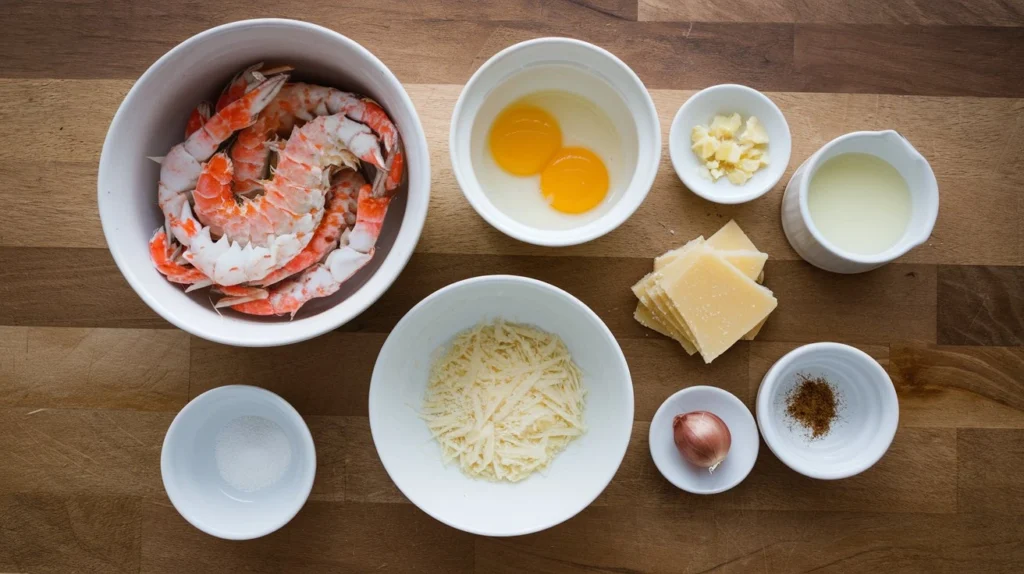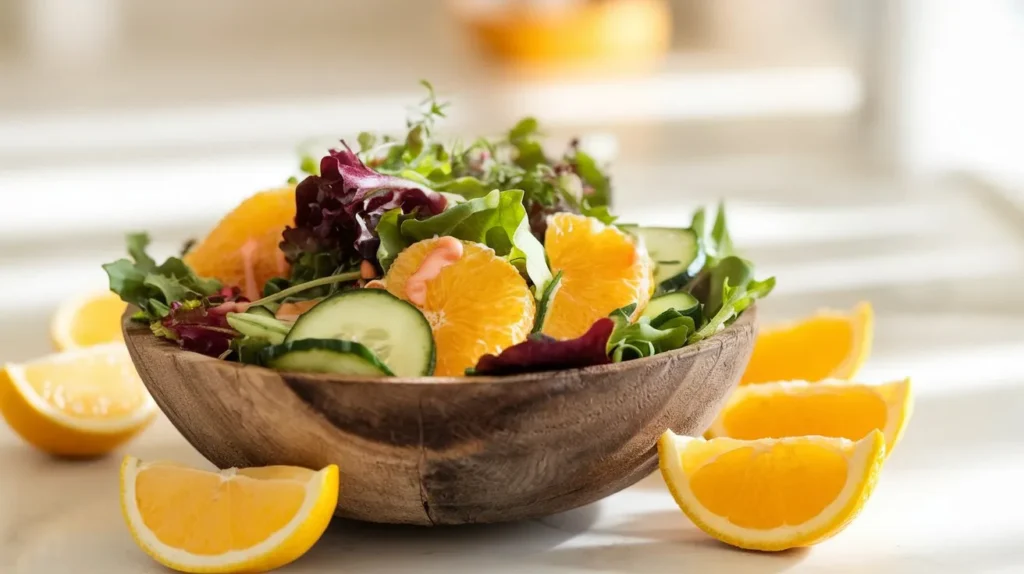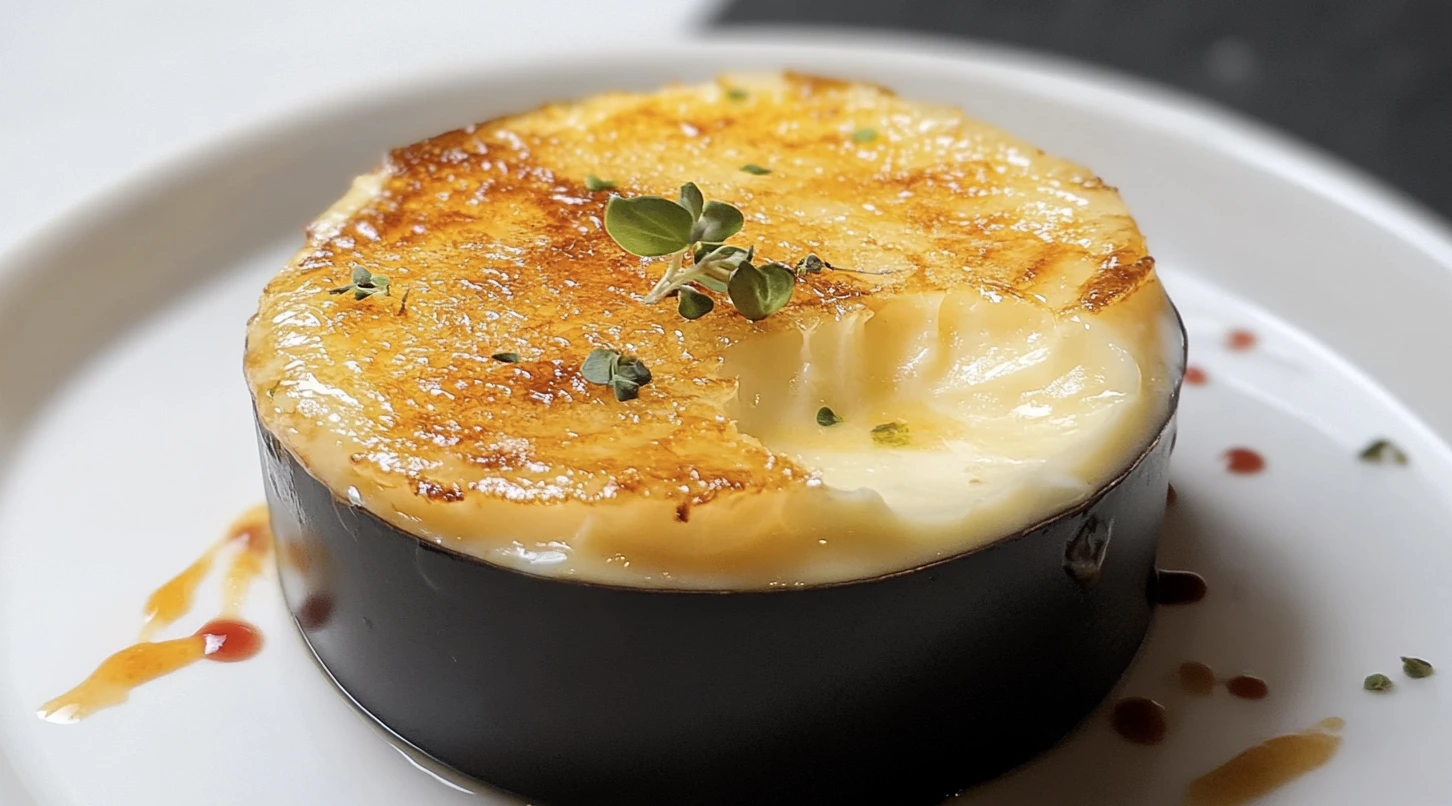Crab Brulee is a luxurious twist on the traditional creme brulee, blending the sweetness of crab meat with the creamy richness of a savory custard. Topped with a golden caramelized crust, this dish serves as an elegant appetizer or an indulgent entrée. Whether you’re hosting a dinner party or simply exploring new culinary horizons, Crab Brulee is sure to impress with its blend of delicate seafood flavors and a hint of buttery sweetness.
Why choose Crab Brulee? For one, it’s an unexpected dish that combines sophistication with comfort. This unique recipe allows you to showcase your culinary skills while providing a memorable experience for your guests. Plus, the versatility of the dish means it can be customized with additional ingredients, such as spices, herbs, or cheeses, to suit your taste preferences.
In this comprehensive guide, we’ll walk you through the ingredients, equipment, preparation steps, and helpful tips to create the perfect Crab Brulee. By the end, you’ll feel confident recreating this standout recipe in your own kitchen. Let’s dive into the details!
Table of contents
To create a delectable Crab Brulee, it’s important to gather the right ingredients. This combination of fresh seafood and creamy elements is what makes the dish truly exceptional. Here’s a breakdown of what you’ll need:
Ingredients for the Best Crab Brulee

- Fresh Crab Meat (1 cup)
- Opt for fresh, lump crab meat for the best texture and flavor. If fresh isn’t available, high-quality canned or frozen crab meat can be a good alternative. Ensure that it’s thoroughly drained and free from shell fragments.
- Heavy Cream (1 cup)
- This forms the custard’s base, providing a velvety texture. You can substitute half-and-half for a lighter option, but the result will be slightly less rich.
- Egg Yolks (3 large)
- These bind the custard, adding to its silky consistency while complementing the crab’s flavor.
- Parmesan Cheese (¼ cup, grated)
- Adds a savory depth and enhances the overall flavor of the dish.
- Garlic (1 clove, minced)
- A touch of garlic brings a subtle aromatic note that pairs well with the crab.
- Shallot (1 small, finely diced)
- Adds a mild sweetness to balance the dish.
- Dry White Wine (2 tablespoons)
- Enhances the dish with a delicate acidity. Choose a wine you enjoy drinking, as its flavor will be prominent.
- Salt (to taste)
- Use a light hand to avoid overpowering the crab’s natural sweetness.
- White Pepper (to taste)
- Provides a mild kick that enhances the dish without overpowering it.
- Granulated Sugar (2 tablespoons)
- For the Brulee topping. It caramelizes under heat, creating a crispy, sweet contrast to the creamy custard.
Optional Additions for Enhanced Flavor
- Lemon Zest (½ teaspoon)
Adds brightness and a refreshing citrus note. - Cayenne Pepper (a pinch)
For those who enjoy a touch of heat, cayenne pepper can give the dish a subtle kick. - Chives or Parsley (finely chopped)
Sprinkle these fresh herbs over the finished dish for a pop of color and freshness. - Gruyère Cheese (¼ cup, grated)
Substituting or adding Gruyère provides a nutty, buttery flavor.
Tips Choosing the Right Crab Meat for Seafood Creme Brulee
- Freshness is Key: Always opt for fresh crab meat if possible. Its sweet, oceanic flavor is unrivaled.
- Canned or Frozen Options: If using canned or frozen crab, check the label for minimal additives and preservatives. Rinse and pat dry to remove excess moisture.
- Pick Through Carefully: Even pre-picked crab meat can have small shell fragments. Take a moment to sift through the meat before adding it to your recipe.
Equipment Needed
Preparing Crab Brulee to perfection requires a few essential tools and some specialty equipment to achieve its signature caramelized top. Having the right items on hand will make the process smoother and ensure professional-quality results. Here’s what you’ll need:
Essential Tools
- Mixing Bowls
- A set of medium-sized mixing bowls is necessary for whisking together the custard ingredients and combining the crab meat.
- Whisk
- A whisk is essential for creating a smooth, lump-free custard base.
- Measuring Cups and Spoons
- Accurate measurements are crucial to achieving the right texture and flavor.
- Fine-Mesh Sieve or Strainer
- Use this to strain the custard mixture, ensuring a smooth and silky texture free of any cooked egg bits.
- Small Saucepan
- For gently heating the cream and other liquids before incorporating them into the custard base.
- Rubber Spatula
- Useful for scraping the mixture into ramekins or ensuring every bit of the custard is utilized.
- Ramekins or Small Oven-Safe Dishes (4-6)
- Individual ramekins are ideal for portioning the Brulee. Choose ones with a flat bottom to allow even caramelization of the sugar topping.
Specialty Tools for a Perfect Brulee Finish
- Kitchen Torch
- A kitchen torch is the classic tool for achieving the crispy, caramelized topping. It provides precise control over the caramelization process without heating the custard underneath.
- Broiler (Optional Alternative)
- If you don’t have a kitchen torch, a broiler can be used. However, it requires careful monitoring to prevent overcooking the custard.
- Candy Thermometer
- Useful if you’re new to custard-making. Ensures the cream doesn’t exceed the ideal temperature of 160-170°F (71-77°C), which can cause the eggs to curdle.
- Pastry Brush
- Optional but handy for cleaning up sugar granules around the edges before caramelizing, ensuring an even finish.
Additional Helpful Tools
- Microplane or Zester
- For grating lemon zest or fresh nutmeg if you’re adding optional flavor enhancements.
- Small Baking Tray with a Towel
- Place a kitchen towel on the tray when baking the ramekins in a water bath. This keeps the ramekins stable during cooking.
- Kettle or Heatproof Jug
- For pouring hot water into the baking tray when creating a water bath (bain-marie) for gentle cooking.
Pro Tips for Equipment Usage
- Kitchen Torch Mastery: Practice using the kitchen torch on sugar sprinkled on a plate before applying it to your dish to get a feel for the right distance and speed.
- Broiler Technique: If using a broiler, place the ramekins in the top rack of the oven and keep a close eye to avoid burning the sugar topping.
Step-by-Step Guide to a Gourmet Crab Brulee
Crafting Crab Brûlée involves multiple steps, but with careful preparation and attention to detail, you’ll achieve a dish that’s rich, flavorful, and visually stunning. Follow these step-by-step instructions to create this decadent appetizer.
Preparing the Crab Mixture
- Pick Through the Crab Meat
- Inspect the crab meat carefully, removing any remaining shell fragments. Pat the meat dry with a paper towel to eliminate excess moisture.
- Mix with Aromatics
- In a mixing bowl, combine the crab meat with finely diced shallots, minced garlic, and a pinch of white pepper. If using lemon zest or cayenne pepper, incorporate them now for additional flavor. Set aside.
Creating the Custard Base
- Warm the Cream
- In a small saucepan, gently heat the heavy cream over low-medium heat until it’s warm but not boiling. Add the dry white wine and stir to combine. Remove from heat and set aside to cool slightly.
- Whisk the Egg Yolks
- In a separate bowl, whisk the egg yolks until smooth. Gradually add the grated Parmesan cheese, mixing until evenly incorporated.
- Temper the Eggs
- Slowly pour the warm cream mixture into the egg yolks while whisking continuously. This prevents the eggs from scrambling and ensures a smooth custard.
- Strain the Custard
- Pass the mixture through a fine-mesh sieve into a clean bowl. This removes any cooked egg bits and ensures a silky texture.
Assembling the Crab Brulee
- Preheat the Oven
- Preheat your oven to 325°F (163°C).
- Prepare the Ramekins
- Evenly divide the crab mixture among the ramekins, spreading it into a flat layer at the bottom of each dish.
- Pour the Custard
- Gently ladle the custard mixture over the crab meat, filling the ramekins nearly to the top.
- Set Up the Water Bath
- Place the ramekins in a deep baking tray. Add hot water to the tray, filling it halfway up the sides of the ramekins to create a water bath (bain-marie). This ensures even cooking and prevents the custard from curdling.
Baking the Brulee
- Bake Until Set
- Carefully transfer the tray to the oven. Bake for 30-35 minutes, or until the custard is set but still slightly wobbly in the center.
- Cool and Chill
- Remove the ramekins from the water bath and let them cool to room temperature. Cover with plastic wrap and refrigerate for at least 2 hours, or overnight, to fully set.
Achieving the Perfect Caramelized Top
- Sprinkle the Sugar
- Just before serving, sprinkle a thin, even layer of granulated sugar over the surface of each ramekin.
- Caramelize the Sugar
- Using a kitchen torch, hold the flame a few inches above the sugar and move it in circular motions until the sugar melts and forms a golden crust. If using a broiler, place the ramekins under high heat for 1-2 minutes, watching closely to prevent burning.
- Let the Sugar Set
- Allow the caramelized sugar to harden for 1-2 minutes before serving.
Plating Ideas
- Elegant Individual Servings
- Serve the brûlée in ramekins placed on small appetizer plates. Garnish with a sprig of fresh parsley, dill, or a sprinkle of finely chopped chives for a pop of color.
- Accompanied by Crostini or Crackers
- Place crispy crostini, toasted baguette slices, or gourmet crackers alongside the ramekin. These provide a delightful crunch that complements the creamy custard.
- Seafood Platter Presentation
- For a more dramatic effect, serve the ramekins on a chilled seafood platter alongside items like shrimp, oysters, and clams. Add lemon wedges for visual appeal and a burst of acidity.
- Rustic Appeal
- Use rustic wooden boards or slate platters for a more casual, earthy presentation. Pair with a small bowl of mixed greens on the side.
Pairing with Sides

- Salad with Citrus Dressing
- A simple green salad with a lemon vinaigrette or orange segments complements the brulee’s richness. The bright, tangy flavors create a refreshing balance.
- Asparagus or Green Beans
- Lightly steamed or grilled green vegetables add texture and a hint of freshness to the meal.
- Roasted Potatoes
- Small, crispy roasted potatoes or fingerlings can serve as a hearty accompaniment if you’re presenting the brulee as a main course.
- Sliced Avocado or Tomato
- These simple additions provide creamy or juicy elements to contrast the brulee.
Perfect Occasions for Serving Crab Brulee
- Dinner Parties
- Impress your guests with this sophisticated appetizer that highlights your culinary skills.
- Romantic Dinners
- The luxurious blend of crab and custard makes for an intimate and elegant start to a meal.
- Holiday Celebrations
- Include Crab brulee in your holiday spread to elevate the festive table.
- Casual Gatherings
- Serve smaller portions alongside other finger foods for a standout addition to your appetizer buffet.
Pairings & Variations
- Pair this Crab Brulee with a 6 Irresistible Rockfish Recipes for an ultimate seafood feast.
- Looking for a dessert alternative? Learn how this compares to Crème Brûlée vs Panna Cotta.
Tips for Success
Making the perfect Crab Brûlée involves attention to detail, but with these tips and tricks, you can avoid common pitfalls and customize the dish to suit your preferences. Let’s ensure your recipe turns out flawlessly every time!
Avoiding Common Mistakes
- Preventing Curled or Overcooked Custard
- Always use a water bath (bain-marie) when baking the custard. This gentle cooking method prevents overheating, ensuring the custard sets smoothly without curdling.
- Tempering the Eggs Properly
- When adding warm cream to the egg yolks, do so gradually while whisking constantly. This prevents the eggs from cooking too quickly and forming lumps.
- Achieving a Balanced Flavor
- Be cautious with seasonings like salt and pepper, as too much can overpower the delicate sweetness of the crab. Taste your mixture as you go to ensure balance.
- Perfecting the Caramelized Topping
- For an even brulee, sprinkle the sugar in a uniform, thin layer. Avoid clumping, which can result in uneven caramelization.
- Monitoring Baking Time
- Overbaking can result in a rubbery texture. Remove the custards from the oven when they’re set but still slightly jiggly in the center—they will firm up as they cool.
How to Customize the Recipe
- Add a Kick of Spice
- Incorporate a pinch of cayenne pepper, smoked paprika, or a splash of hot sauce into the custard for a spicy variation.
- Experiment with Cheese
- While Parmesan is a classic choice, you can substitute or mix in Gruyère, Asiago, or even a sharp cheddar for different flavor profiles.
- Herb Variations
- Fresh dill, parsley, or tarragon can add a burst of flavor. Fold finely chopped herbs into the crab mixture or sprinkle them on top as a garnish.
- Make it Gluten-Free
- Most versions of Crab brulee are naturally gluten-free. To ensure this, double-check any cheese or other ingredients for hidden gluten sources.
- Citrus Twist
- Lemon zest in the custard or a touch of lime juice in the crab mixture can brighten the dish and enhance its seafood essence.
Storage and Reheating Advice
- Refrigerating Leftovers
- Cover the ramekins with plastic wrap and refrigerate for up to 2 days. Avoid caramelizing the sugar until you’re ready to serve.
- Reheating
- Reheat the custard gently in the oven at 300°F (150°C) for about 10 minutes. Avoid using the microwave, as it can ruin the custard’s texture.
- Freezing
- While freezing is not ideal for Crab Brûlée due to the custard’s delicate texture, you can freeze it before adding the sugar topping. Thaw in the refrigerator overnight and brûlée just before serving.
Pro Tips for Success
- Test a Small Batch First
- If you’re making Crab brulee for the first time, try a smaller test batch to fine-tune your method and flavors.
- Use Fresh Ingredients
- Fresh crab meat, cream, and eggs are crucial for achieving the best flavor and texture.
- Don’t Skip the Resting Period
- Allowing the custards to chill in the fridge after baking ensures they fully set and develop their flavors.
- Practice with the Kitchen Torch
- If you’re new to using a kitchen torch, practice caramelizing sugar on a plate before applying it to the brûlée. This helps you perfect your technique.
Even with detailed instructions, you may still have questions about making Crab Brûlée. Here are some commonly asked questions and their answers to help ensure your success.

Crab Brûlée Recipe
Ingredients
- 1 cup heavy cream
- 2 large egg yolks
- ½ teaspoon Dijon mustard
- ½ teaspoon Old Bay seasoning
- ¼ teaspoon cayenne pepper optional, for heat
- ½ teaspoon salt
- ¼ teaspoon black pepper
- ½ cup fresh lump crab meat
- 2 tablespoons grated Parmesan cheese
- 2 teaspoons granulated sugar for caramelized topping
- 1 teaspoon chopped chives for garnish
Instructions
- Preheat the Oven:
- Set your oven to 325°F (163°C).
- Prepare a water bath by placing ramekins in a baking dish with hot water halfway up the sides.
- Prepare the Custard:
- In a saucepan, warm the heavy cream over low heat until it just begins to steam.
- In a bowl, whisk together egg yolks, Dijon mustard, Old Bay seasoning, cayenne, salt, and black pepper.
- Slowly pour the warm cream into the egg mixture, whisking constantly to prevent curdling.
- Add Crab Meat:
- Gently fold in the lump crab meat and grated Parmesan cheese.
- Bake the Brûlée:
- Divide the mixture into 4 ramekins.
- Place in the prepared water bath and bake for 30 minutes, or until the custard is set but slightly jiggly in the center.
- Caramelize the Sugar Topping:
- Let the brûlées cool for 10 minutes.
- Sprinkle granulated sugar evenly over each custard.
- Use a kitchen torch to caramelize the sugar until golden brown (or broil for 1-2 minutes).
- Garnish & Serve:
- Let sit for 5 minutes before serving.
- Garnish with chopped chives and serve warm with crusty bread or crackers.
Notes
- For an extra flavor boost, add a splash of lemon juice or a pinch of smoked paprika.
- If you don’t have a torch, use your oven’s broiler for a similar caramelized effect.
People also ask
1. What is Crab Brûlée?
Crab Brûlée is a savory twist on the classic crème brûlée, featuring fresh crab meat, eggs, cream, and seasonings, topped with a caramelized sugar crust. It blends the rich, creamy texture of a traditional brûlée with the delicate sweetness of crab.
2. What type of crab is best for Crab Brûlée?
Fresh lump crab meat or Dungeness crab works best for its delicate, sweet flavor. However, blue crab and king crab can also be used depending on availability and personal preference.
3. Can I make Crab Brûlée without a torch?
Yes! If you don’t have a kitchen torch, you can caramelize the sugar topping by placing the dish under a broiler for a few minutes. Keep a close eye to prevent burning.
4. How do I prevent my Crab Brûlée from curdling?
To avoid curdling, make sure to slowly temper the egg mixture by gradually adding warm cream while whisking constantly. Also, bake it in a water bath (bain-marie) at a low temperature.
5. What flavors pair well with Crab Brûlée?
Lemon zest, chives, shallots, Old Bay seasoning, and a hint of cayenne pepper complement the sweetness of the crab without overpowering it.
Conclusion
Crab Brulee is a delightful blend of rich, creamy custard and sweet, tender crab meat, topped with a perfectly caramelized sugar crust. This luxurious dish is more than just a recipe, it’s a culinary experience that combines elegance with comfort, making it the perfect choice for special occasions, romantic dinners, or simply indulging your love for seafood.
With its delicate balance of flavors and textures, Crab Brulee is sure to impress anyone lucky enough to try it. By following the step-by-step instructions, utilizing helpful tips, and incorporating your own creative twists, you’ll have a dish that not only tastes incredible but also looks stunning when served.
Whether you’re a seasoned cook or exploring new horizons in the kitchen, this recipe is an excellent way to showcase your skills. So gather your ingredients, ready your ramekins, and take the leap to create a dish that’s as rewarding to make as it is to eat.
Your culinary masterpiece awaits, enjoy every bite of your Crab Brulee!
Final Thoughts
Crab Brulee is the perfect dish to impress guests at your next dinner party. If you’re a fan of high-end seafood, check out The Tastiest Fish in the World to explore even more exquisite flavors.
